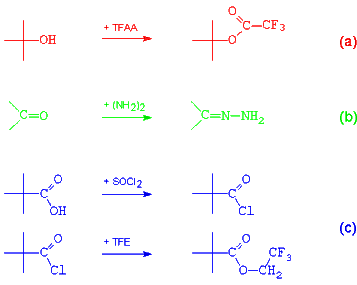Surface treatments usually alter a very shallow surface layer only. The analysis of these alterations has to deal with a very small amount of material before the background of the bulk material which is many orders of magnitude larger.
Classical techniques used for the analysis of organic substances such as IR spectroscopy and NMR spectroscopy usually do not provide useful information. Surface sensitive techniques are required.
An overview about our analytical services can be found at analytical services
"Chemical analysis of surfaces" in Laborpraxis
What is X-ray photoelectronspectroscopy? What can it do for chemical surface analysis?
If your interested in the answers have a look at our contribution to Laborpraxis: Wenn das Äußerste zählt: Röntgen-Photoelektronen-Spektroskopie
